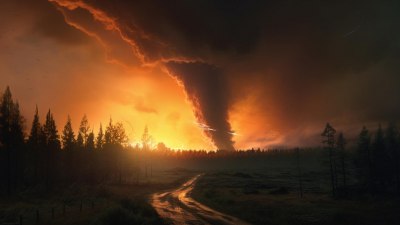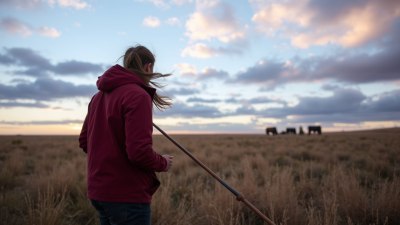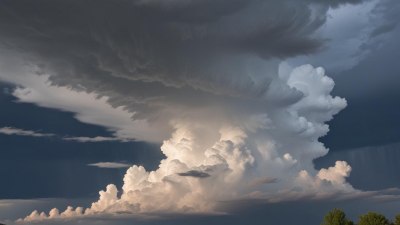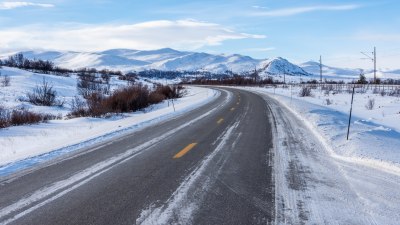What Are Fire Tornadoes and How They Form in Wildfires
Explore the phenomenon of fire tornadoes, their formation, and impact during wildfires. Understand their behavior and safety measures.

Fire tornadoes, also known as fire whirls, represent one of nature’s most dramatic and destructive phenomena, occurring primarily during intense wildfires. Unlike traditional tornadoes, which are formed by severe thunderstorms, fire tornadoes arise from the heat and turbulence produced by flames. This article delves into the specifics of fire tornadoes, detailing their characteristics, how they form, their risks, and the science behind this fiery vortex.
Understanding Fire Tornadoes
A fire tornado is a whirlwind that occurs in extreme heat, where flames create large, rotating columns of air. These phenomena can be visually stunning yet extraordinarily dangerous, reaching heights of several hundred feet. Typically, they form in situations where the ambient temperature, wind speed, and volatile fuels interact to create unique conditions. Fire tornadoes can generate wind speeds upward of 100 mph, capable of hurling debris and igniting new fires miles away from the original source.
The Science Behind Fire Tornadoes
Fire tornadoes form through a combination of heat, fire intensity, and airflow. When a fire burns uncontrollably, it heats the air directly above it, causing that air to rise. As this warm air ascends, it creates a low-pressure area. When surrounding cooler air rushes in to fill this void, it can start to rotate depending on wind conditions, creating a vortex. When the temperature differential is considerable enough, this rotating column can become a fire tornado.
Conditions Favoring Fire Tornado Formation
Several environmental factors contribute to the likelihood of a fire tornado. These include:
- Intense Heat: High temperatures resulting from a wildfire provide the necessary thermal energy to create rising air currents.
- Wind Conditions: Winds must be sufficient to create a rotational effect in the rising hot air.
- Dry Conditions: Low humidity levels and a lack of moisture in the ground allow for the rapid spread of fire.
- Available Fuels: Vegetation, structures, and other materials that can combust easily provide adequate fuels to sustain the fire's intensity.
Characteristics of Fire Tornadoes
Fire tornadoes exhibit several distinct characteristics:
- Appearance: Often, fire tornadoes appear as whirling columns of flame and smoke, and they can assume various shapes, including narrow funnels or broader swirling formations.
- Size: Their size can vary significantly, generally ranging from a few feet to several hundred feet tall.
- Duration: Fire tornadoes can last anywhere from a few minutes to over an hour, depending on conditions.
- Destructive Power: With their high wind speeds, fire tornadoes can uproot trees, level structures, and spread fire in new directions, creating more hazards during a wildfire.
Fire Tornadoes in History
Fire tornadoes, although not extremely common, have been documented throughout history. Notable instances include:
- The 2003 California Fire Siege: A series of large fires in Southern California where fire tornadoes were reported, showcasing their destructive capability.
- The 2018 Carr Fire: During the Carr Fire in California, a fire tornado reached wind speeds of over 140 mph, contributing to the rapid spread of flames and devastation of surrounding areas.
- Black Saturday Bushfires: In Australia, the Black Saturday bushfires in 2009 produced fire tornadoes that devastated whole communities, illustrating their potential ferocity.
How Fire Tornadoes Impact Wildfire Behavior
Fire tornadoes can significantly influence the dynamics of a wildfire. They can create spot fires, spreading embers over vast areas, essentially functioning as wildfires within wildfires. This phenomenon complicates firefighting efforts, as fire tornadoes can rapidly change the direction of the fire, creating unpredictable and hazardous conditions.
Safety Measures in the Presence of Fire Tornadoes
Understanding fire tornadoes is crucial for safety, especially for those in fire-prone areas. Key safety measures include:
- Awareness: Stay informed about local fire conditions and warnings. Awareness can lead to timely evacuations and preparedness.
- Evacuation Plans: Have a clear plan that includes multiple escape routes away from potential fire paths, particularly in areas known for wildfires.
- Emergency Kits: Maintain emergency kits that include essentials such as water, food, first-aid supplies, and important documents.
- Monitoring Fire Behavior: This helps in understanding when to evacuate or take protective measures.
Fire tornadoes are a fascinating yet dangerous phenomenon that highlights the extreme conditions that wildfires can create. By understanding how they form and the impact they can have on fire behavior, we can better prepare for and respond to wildfires and their associated hazards. Their destructive potential emphasizes the importance of fire safety awareness and preparedness in fire-prone areas.











